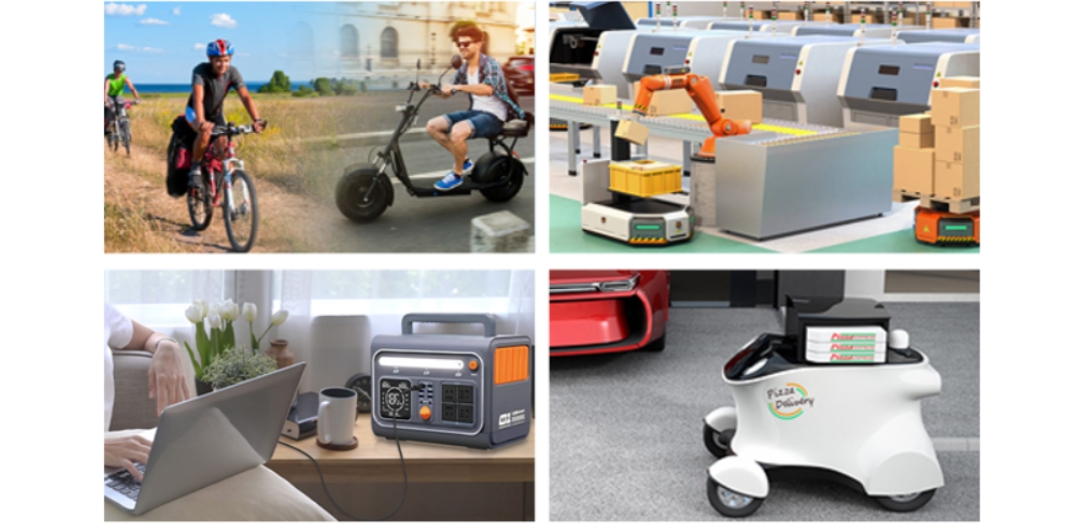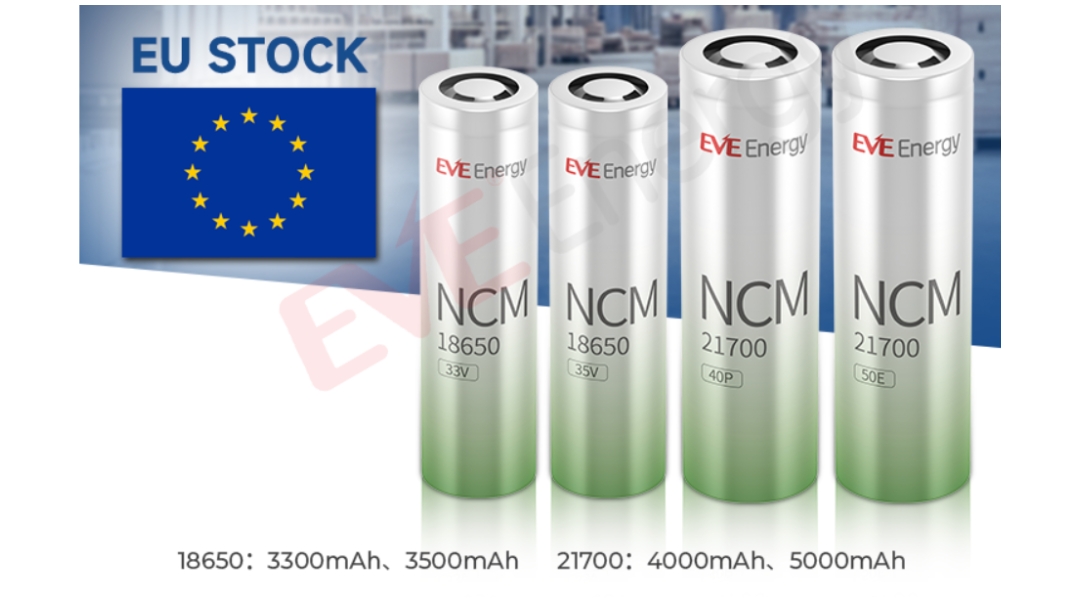Choosing the right lithium-ion battery size is a critical balancing act that directly impacts a device’s runtime, cost, and longevity. Larger battery packs offer more energy for longer operation, but they also add significant weight, expense, and physical bulk. They can also take longer to charge and put more stress on the hardware. On the other hand, smaller, lighter packs are less expensive but must be cycled more deeply and frequently, which causes them to wear out much faster.
The key is to find the right trade-off, selecting a battery size that reliably meets the application’s typical demands without the burden of carrying excess capacity you’ll rarely use.

How to Size a Lithium-Ion Battery for Various Applications?
Choosing the right lithium battery dimensions is a systematic process. To achieve a safe, reliable, and cost-effective solution, you must carefully work through several critical considerations, from initial power audits to final safety checks.
1. Understand Your Power Needs
The first pillar of lithium-ion battery sizing is mapping every device you run. List each load, note its watts, and mark when it turns on. Add the peaks to see the highest current draw, then total the watt-hours for a full-duty cycle. The quick audit stops undersized packs that sag under spikes.
2. Calculate Required Battery Capacity
Convert those watt-hours into amp-hours using Ah = Wh / Vnom. Round up to the next whole number, and then add your preferred depth-of-discharge limit to stay within healthy cycling. This is the core math behind lithium-ion battery sizing and keeps capacity realistic.
3. Choose the Right Voltage and Configuration
Match the pack voltage to your inverter, motor, or electronics. String cells in series for voltage, parallel for capacity, and use a balanced mix such as 4s 2p when both rise together. Doing so ensures the lithium-ion battery sizing exercise delivers the voltage stability your system expects.
4. Consider Discharge Rate (C-Rate)
A cell rated at 1C can safely deliver its full capacity in one hour; 2C doubles that current. Check that the continuous and peak C-rates meet your load spikes, or your pack will heat and age fast. Folding C-rate into lithium-ion battery sizing averts surprise voltage droop during heavy pulls.
5. Account for Safety Margins and Efficiency
Real systems waste power in wiring, converters, and heat. Allocate extra capacity and use a battery-management system alongside cell balancing and temperature cut-offs. Such a buffer is a small premium in the lithium-ion battery sizing ledger that guards cycle life and user safety.
6. Factor in Environmental and Space Constraints
High heat cuts life; cold cuts available energy. EV range can drop in freezing weather. Reserve room for thermal pads, heaters, or vents, and don’t forget mounting clearances. Building climate tolerance into lithium-ion battery sizing keeps performance steady from season to season.
7. Select Battery Type and Form Factor
Cylindrical cells are rugged and cheap, prismatic cells pack well in rectangles, and pouch cells maximise energy density. Match the cell style to your enclosure and service plan. Choosing the format lets lithium-ion battery sizing hit volume and weight targets without awkward dead space.
8. Final Check: Budget, Lifespan, and Certification
Tally cost per kWh, cycle count at your depth-of-discharge, and compliance needs. Confirm spares, warranty, and recycling routes. Closing these gaps cements lithium-ion battery sizing decisions into a project that will pass audits, survive shipping, and pay back its investment.
18650 Battery Size Chart and Common Applications
| Application (typical configuration) | “Go-to” pack dimensions | Notes & Example |
| High-output flashlight/headlamp (1 × 18650) | 65 mm L × 18 mm Ø | Dimensions are essentially the bare cells; most lights add ±2 mm wall thickness. |
| Laptop (6-cell stick, 11-12 V class) | 295 × 77.7 × 7.6 mm | A slim, rectangular housing that slots along the notebook’s chassis edge. |
| Cordless power tools (18 V “slide-pack”, 5 Ah class) | 114 × 74 × 56 mm or 139 × 85 × 83 mm | Slide-rail footprint is shared across brands; height grows with capacity. |
| E-bike / e-scooter downtube (Hailong 13S4P, 48 V class) | 361 × 92 × 90 mm | “Hailong-01” and “Dolphin” cases are the industry default for 52-cell packs. |
| Portable power bank (4 × 18650 DIY shell) | 77 × 80 × 21 mm | PCB with USB ports sits on the 80 mm side; height is under 1 in for pocketability. |
| Bluetooth speaker / LED work light (2S1P, 3.7 V-7.4 V packs) | 66 × 37 × 19 mm | Compact, shrink-wrapped packs with flying leads plug straight into small devices. |
| Electric skateboard (10S2P, 36 V class) | 210 × 140 × 26 mm | Flat “brick” that tucks inside the deck enclosure; height is critical for ground clearance. |
| Server back-up / solar DIY (13S4P, 48 V module) | 330 × 152 × 57 mm | Rugged module originally built for data-centre UPS, repurposed by hobbyists. |
| EV / stationary storage (Tesla Model S module, 6 kWh class) | 665 × 302 × 79 mm | Contains 444 cells; designed to bolt into battery trays but equally popular for home powerwalls. |
EVE’s 18650 Lithium-Ion Battery Cells
EVE offers a versatile range of 18650 cylindrical cells, allowing designers to select a model based on the specific priorities of their application, whether it’s high capacity, long cycle life, or powerful discharge rates. All models share the standard 18.35 x 65.00 mm size, a nominal voltage of 3.60V (or 3.65V for the highest capacity cell), and a working voltage range of 2.5–4.2V.
The portfolio includes:
- High-Capacity Models: The lineup is headlined by the 18650/35V, which offers a maximum capacity of 3500 mAh and an energy density of 255 Wh/kg. It supports a robust 10.2 A maximum discharge current and is rated for 800 cycles.
- Long-Life Models: For applications demanding longevity, models like the 18650/26V, 18650/29V, and 18650/33V are rated for an impressive 1000 cycles. These cells offer a balance of capacity (from 2550 mAh to 3200 mAh) and solid performance, with the 33V model providing a 10.0 A maximum discharge.
- High-Discharge Models: The 18650/20P and 18650/25P are tailored for high-current demands, offering maximum discharge rates of 30 A. While their capacity is lower (2000 mAh and 2500 mAh respectively) and their cycle life is 300 cycles, they are built to handle intense power draws, making them suitable for applications like power tools.
In summary, this portfolio provides clear options for designers to make crucial trade-offs, enabling them to select the perfect cell based on whether their application prioritises high capacity, extended cycle life, or a powerful discharge rate.

Conclusion
Sizing a lithium-ion battery is a crucial balancing act that goes far beyond simply choosing a capacity. It requires a systematic evaluation of your application’s true energy needs, discharge rates, voltage, and physical constraints. As manufacturers like EVE specifications demonstrate, the ultimate goal is to make deliberate trade-offs between performance, cost, and lifespan. A methodical approach is the key to engineering a battery system that is not only safe and efficient but perfectly optimised for its intended purpose.




























